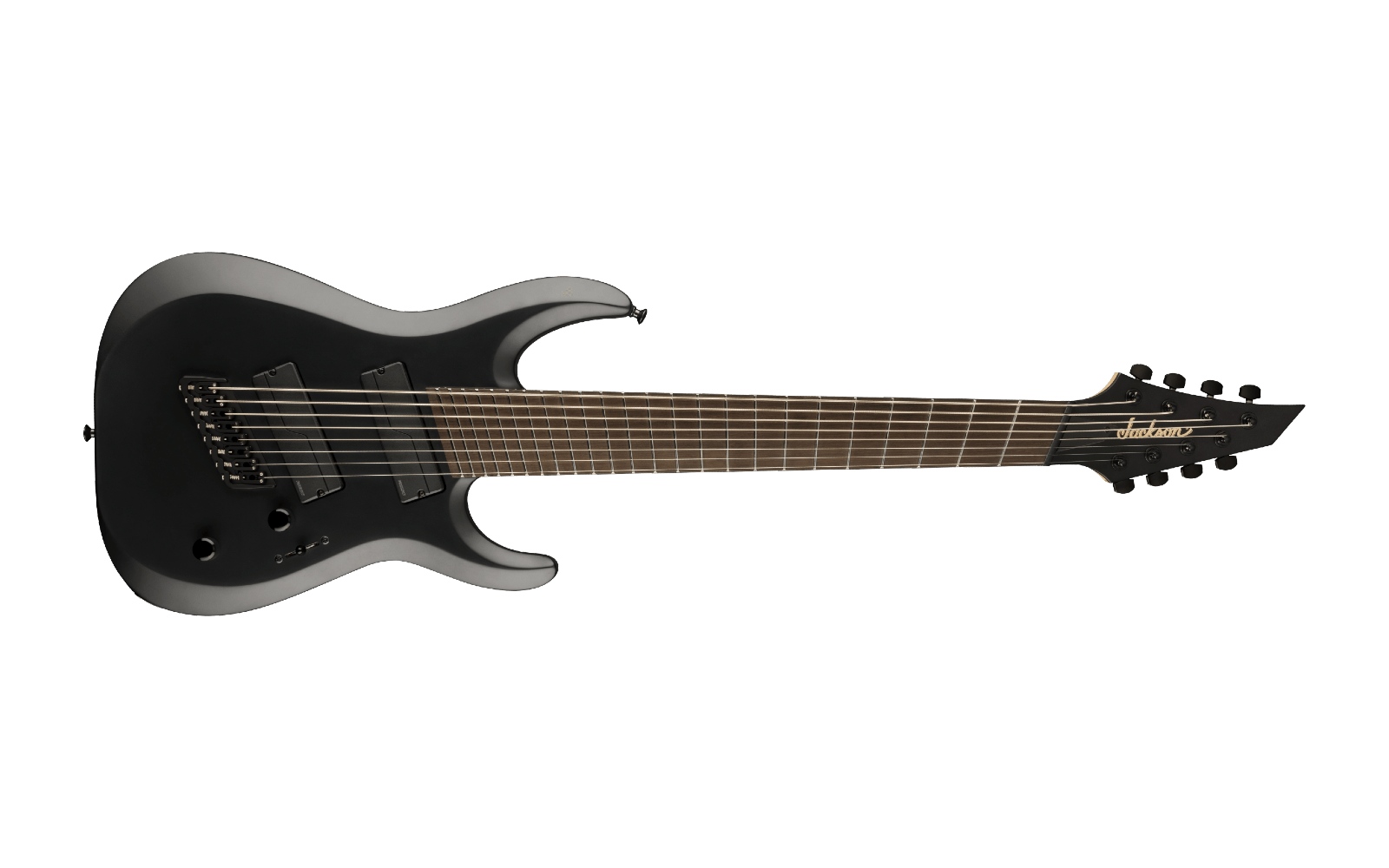Jackson Concept Series DK Modern MDK HT8 MS

The limited edition Jackson Concept Series Dinky MDK HT8 MS is the embodiment of modern guitars with an extended tonal range. By combining the latest technology with elegant ergonomics, Jackson has achieved an unmatched level of playability and precision, creating a sound that is as perfect as I have ever heard from an eight-string instrument.
Jackson Dinky
In 2002, Swedish band Meshuggah released their groundbreaking fourth studio album Nothingexperimented with tunings that were unheard of at the time, about an octave below standard E. While touring for this album, the band realized that their seven-string guitars weren’t up to the task, so they decided to add the fabled eighth string. I distinctly remember reading about it online and being blown away that a band had the courage to take something that is already so divisive and controversial – the seventh string – even further.
Find out about the latest reviews of music equipment here.
Fast forward 22 years and every major guitar brand that releases instruments for rock and metal has at least one eight-string guitar model. I freely admit that I underestimated Jackson’s importance to the extended range guitar ethos, but after a week with a Concept Series Dinky MDK HT8 MS, I’m proven wrong. Hats off to Jackson. You’ve won me over.
The Concept Series MDK HT8 MS’s two-piece basswood Dinky body is classic metal and finished in a luxurious satin black for understated elegance. If you look closely, you’ll notice that everything is very angular. There are so many angles, in fact, that for a moment I was under the illusion that the body was not the classic Dinky shape, but something more asymmetrical. The Hipshot 8 bridge and Fishman Fluence Modern pickups are set into the body at a 26-degree angle. The graphite-reinforced maple/wenge/maple three-piece neck is multiscale (25.5″- 27.5″) with 24 fanned jumbo frets on a 12″-16″ compound radius ebony fingerboard. The Graphite Tech TUSQ XL nut is also angled, but in the opposite direction, making the scale length longer at the bottom end. The result of all this is that you are guaranteed to have improved sustain on the bottom two strings, while the top six strings retain a more classic scale length. The upturned edge of the fingerboard features glow-in-the-dark Luminlay fret dots to solve any issues that may arise when navigating the fretboard in dark spaces.
8-string guitar
When I first picked up an eight-string guitar about 17 years ago, I joked with my drummer at the time that the neck looked and felt like “a damn aircraft carrier.” I think this is a big reason why so many guitarists have a phobia of extended range guitars. My argument is that the extra strings and fretboard space, when done right, open up a whole world of creative possibilities. Jackson has absolutely nailed the feel of the neck and fretboard on the Concept Series Dinky MDK HT8 MS. The satin finish, super-fast neck profile and fanned frets enhance playability and make it the ideal introduction to the world of eight-string guitars.
Fischmann Fluence
I know what you’re all thinking, so let’s talk about tone. That might be the deciding factor, right? With baritone guitars, tone is hard to pin down. High-gain tones that work great on drop D can easily turn the bass of an eight-string into a muddy mush. The choice of pickup is often to blame. While modern metal pickups tend to offer more power, a set of super-hot pickups on an eight-string guitar can make it nearly impossible to get a good tone. That was my mindset when I plugged the Jackson Concept Series Dinky MDK HT8 MS into my DI box and opened up an instance of Neural DSP’s Archetype Gojira X in Reaper. I was immediately blown away by the clarity in the bass range, even while playing the muddiest, dirtiest, most dissonant chords I could hammer on the two lowest strings. I attribute this clarity in part to the excellent string sustain achieved by the scale length and Hipshot 8 bridge, but the real MVPs (most valuable pickups) here are the Fishman Fluence Modern PRF-M39-AB1 (neck) and Fishman Fluence Modern PRF-M39-CB1 (bridge) pickups. These pickups achieve a level of clarity and precision that I don’t think is matched by any 8-string model on the market today. Even under pressure from the most extreme high-gain tones, there was nowhere near as much muddiness as I expected. And if you’re worried that this might have a negative impact on the leads, there’s a hidden feature that will put your mind at ease.
The guitar is equipped with a three-position switch (bridge, bridge/neck, neck), a volume control, and a tone control. The tone control has a push/pull function that allows you to switch between two different voicings. Activating the second voicing by pulling up the tone control increases the gain, giving you all the power you need for those screaming solos. It also adds more fullness to the low mids, making high-gain amp tones a bit more barky and aggressive at the expense of some clarity. The standard voicing (tone control pushed in) was cleaner and more precise, making it the optimal choice for low-end riffs. I found the two voicings more noticeable when playing leads and also on clean amp tones.
A highlight for me was tuning the guitar. Yes, I said what I said. It’s a looker. The Jackson die-cast locking tuners felt incredibly precise and the guitar barely went out of tune the entire week I had it in my spare room studio. The only thing I wished for was a fret band that I could have wrapped around the nut to prevent ringing in the strings I wasn’t playing.
I have been considering adding an eight-string to my guitar family for many years. There is a very short list of brands I would grant that privilege to, and I’d be a fool to ever doubt that Jackson should be at the top of that list. The Jackson Concept Series Dinky MDK HT8 MS ticks all the boxes, including some I didn’t even know needed to be met.
For more information visit Jackson Guitars.



